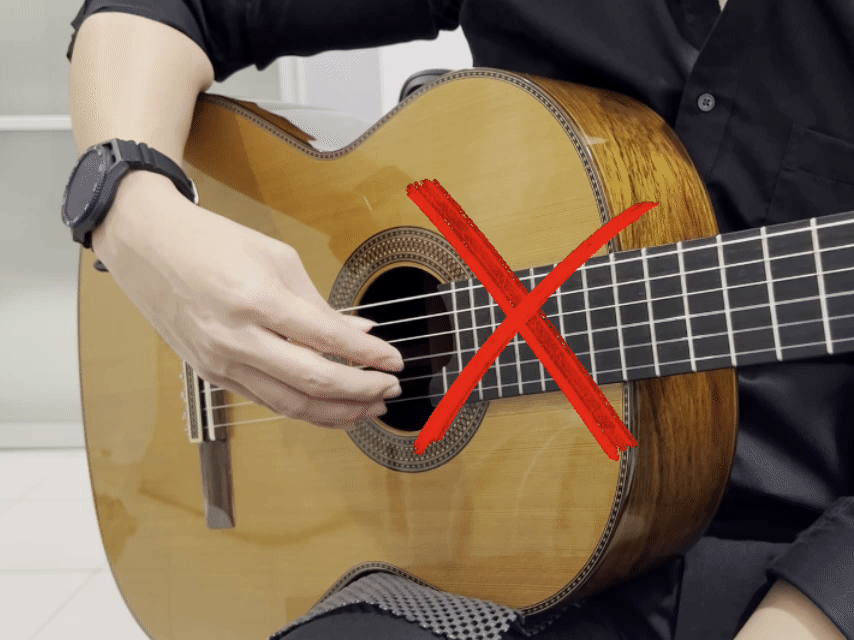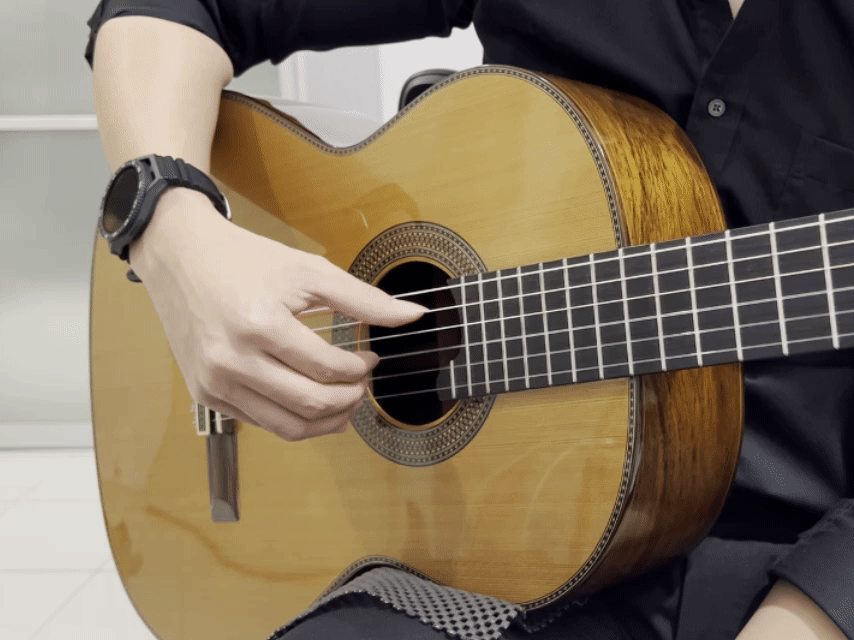Hey guys! It’s GREAT to see you here. If you’ve subscribed to my newsletter, you’re definitely a guitar enthusiast looking to improve your skills, and you’re in the right place! I’m excited to share my very FIRST TIP here, and I hope it’s helpful for you.
Fingerpicking can transform your guitar playing by adding depth and emotion to your music. However, many players encounter mistakes they don’t even realise, which can hinder their progress. Whether you’re a beginner or an intermediate player, addressing these issues can significantly enhance your playing. Let’s jump into it!
Incorrect Fingers Position
The Mistake: A frequent issue is placing your IMA (index, middle, and ring) fingers too far forward, leaving your thumb at the back. This awkward positioning makes it challenging to pluck strings efficiently.
The Solution: Instead, position your thumb slightly ahead of your fingers. Your IMA fingers should be gently bent, as if they are standing on the string.
Why This Matters: Proper finger positioning is crucial for maintaining control and precision while playing. You’ll find it easier to produce clean, distinct notes.
Incorrect Wrist Position
The Mistake: Many players unknowingly tilt their wrists downward, stretch them too far, or rest them too close to the strings. This can lead to discomfort and accidental muting of the strings, affecting your sound quality.
The Solution: Ensure there’s enough space between your wrist and the guitar—imagine fitting three fingers in the gap. Keep your wrist straight in line with your forearm rather than bent downwards. This alignment will reduce tension and improve your finger dexterity, allowing you to play more comfortably and accurately.
Why This Matters: Your wrist acts as a stabiliser for your hand movements. Proper wrist position allows for greater flexibility and reduces the risk of strain or injury. An incorrect wrist position can lead to fatigue, making it difficult to play for extended periods, and can negatively impact your overall sound quality.
Incorrect Plucking Direction
The Mistake: Some guitarists pluck strings outward, away from the guitar body, which diminishes control and speed.
The Solution: Adopt a “claw” shape with your hand, directing the plucking motion towards your palm. Focus on using your finger joints as the source of movement. It’s okay if your fingers occasionally hit multiple strings; practice slowly to build precision. Over time, this approach will enhance your finger control and allow for faster playing.
Why This Matters: Plucking in the correct direction is key to developing speed and accuracy. By moving your fingers toward your palm, you maintain a natural motion that increases efficiency and reduces the likelihood of missing strings.
Never Alternating Fingers
The Mistake: Using the same finger repeatedly, especially when playing fast-tempo songs, can quickly lead to tension and fatigue.
The Solution: Alternate your fingers while plucking. Though it might feel awkward initially, alternating fingers will become second nature with practice, allowing you to maintain a relaxed hand and increase your playing speed and accuracy.
Why This Matters: Relying on a single finger can limit your ability to play complex patterns and fast passages. By training yourself to alternate, you’ll develop a more balanced and efficient technique, leading to a smoother and more versatile playing style.
Plucking Harder Than Necessary
The Mistake: A common misconception is that plucking harder will produce a louder sound. In reality, excessive force can create tension and lead to unwanted buzzing.
The Solution: Focus on the coordination between your fretting and plucking hands. Match the strength of your plucking hand to the pressure applied by your fretting hand. For example, if your fretting hand presses with a force level of 5, your plucking hand should match that level or use even less force. Experiment with different levels to find a balance that produces a clean, buzz-free sound.
Why This Matters: Over-plucking can cause unnecessary strain and lead to unwanted noise, such as buzzing or muted notes. By learning to play with the appropriate amount of force, you’ll enhance your overall sound quality and enjoy a more relaxed playing experience.
Making these small adjustments can have a big impact on your fingerpicking technique. If you notice any of these habits in your playing, it’s essential to address them now. The longer they persist, the more challenging they will be to correct as you progress in your guitar journey.
To see these tips in action, check out my YouTube video on this topic. It offers a visual guide to help you improve your fingerpicking technique. Remember, patience and consistent practice are key.
I hope you find these insights helpful, and I’d love to hear your feedback on this first tip. Your thoughts and experiences can help shape future articles in my newsletter, so feel free to share your comments or questions!
PS: What’s the #1 thing that made you want to check out this newsletter? Reply to this email and let me know, I READ EVERY REPLY!







